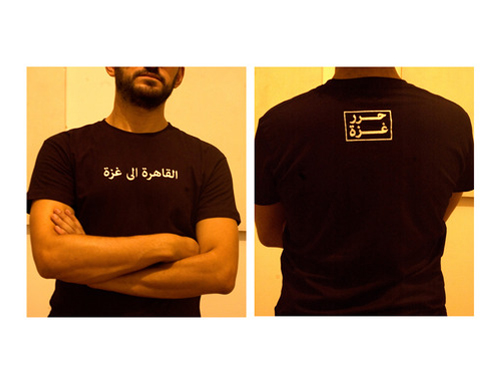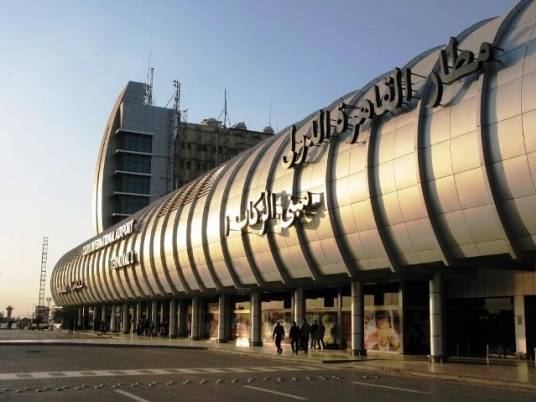
With the thrilling title “The Secret of the Temple,” a dissident from the Muslim Brotherhood has shaken the book market and attracted wide media attention, thanks to his controversial account of the history and internal politics of the nation’s oldest Islamist organization.
Tharwat al-Kharabawy’s book, which first came out last fall, is still selling like hot cakes in a society where many are keen to understand the secretive world of Egypt’s new ruling elite, outlawed and driven underground for at least six decades. The book has gone into its 11th print in less than three months, establishing a rare market record.
But despite some praise, mainly from the Brotherhood’s critics, the book fails to stand out as a resourceful piece of work for seekers of impartial knowledge. With its plethora of unauthenticated and conspiracy theory-laden claims, the text often seems more like a vindictive endeavor by an outcast than a sound piece of reportage.
Many of its most incendiary propositions are also leaked to readers in the form of conversations that the author allegedly had with some of his peers, who are either still Brotherhood members or had already broken ranks with the 85-year-old organization. Instead of going the extra mile to verify these propositions and stand fully accountable for the content of his book, Kharabawy resorts to the evasive method of attributing them to his low-key interlocutors.
Brothers in army?
The claim about the penetration of Egypt’s Armed Forces by the Brothers is a case in point. Throughout the 339-page book, small hints are leaked about the group’s Wahadat Branch, a division in charge of recruiting members from the military and the police.
Due to the author’s ambiguous tone, the reader can hardly infer that this division — first created during the time of Brotherhood founder Hassan al-Banna — was resurrected by hawkish former Supreme Guide Mostafa Mashhour, who led the group from 1996 to 2002.
While readers may have no doubt about the Brothers’ penetration of the military during Banna’s time, the book fails to provide convincing and logical evidence to prove that this pattern persisted in the 1990s and 2000s under the nose of a regime whose intelligence services had their eyes wide open to keep the Armed Forces immune to Islamist infiltration.
Toward the end of his work, Kharabawy drops a bombshell about the same matter. At the funeral of a former military officer friend in 2011, Kharabawy writes that he met a Brotherhood member who affirmed to him that the deceased was an undercover Brother. Not only that, but Kharabawy was also told that the military ended up siding with the 25 January revolution thanks to the role played by undercover Brotherhood-affiliated military officers.
Here, the author quotes his interlocutor, “Ashraf,” as saying: “The inside of the Brotherhood is so deep and full of crypts. … The Brothers had planned to establish the state of Islam. It is stupid to think that this state can be established through the group’s families and units, or through morning and evening prayers and sermons.
“A state can be established through work and jihad. And work can be achieved if one possesses the tools of force … and the military is one of these tools,” continued the mysterious Ashraf, whose last name is never mentioned.
Yet there is no elaboration about the role allegedly played by those undercover officers to force the Supreme Council of the Armed Forces to abandon former President Hosni Mubarak after the 18-day-long uprising, which makes one feel doubtful about the authenticity of the proposition.
Freemasons in disguise?
The group’s alleged penetration of the military until Mubarak’s ouster is not the only point that may prompt an impartial reader to question the veracity of the text. Under the title “Masonic Brotherhood,” Kharabawy hits you in the face with a chapter alleging that the Brotherhood came into being as part of a cosmic conspiracy mounted by the Freemasons, another legendarily secretive group. Once again, Kharabawy bases this earth-shattering claim on a casual exchange with a former Brotherhood member who is presented throughout the text as an authority on the group’s history and ideology.
Ahmed Ibrahim Abu Ghaly takes Kharabawy on a journey to explore the ins and outs of the underground world of the Freemasons, to highlight the similarities between them and the Muslim Brotherhood.
“Like the Freemasons, the Muslim Brotherhood is an international organization. And both associations are based on fraternity,” Abu Ghaly is quoted in the book as saying.
Kharabawy’s mentor goes on to allege that Freemason-controlled Western intelligence bodies recruited Egyptian students studying in the West decades ago and pushed them to penetrate the Muslim Brotherhood:
“But there is no evidence for that?” asks Kharabawy.
“You are right, what I am saying is based on extrapolation in light of available information … With extrapolation, we can solve mysteries,” says Abu Ghaly.
“Can the Muslim Brotherhood be one of the Freemasons associations around the world?” asks Kharabawy, later in the chapter.
“Of course not. Most of the Muslim Brotherhood’s members have good intentions and genuine religious feelings, but it is logically possible that some of them or some of the group’s leaders have ties with the Freemasons, and they may be running the group in a way that would serve the Freemasons’ secret agenda,” responds Kharabawy’s interlocutor.
This chapter may be enough on its own to turn off readers in pursuit of useful knowledge, rather than an entertaining and thrilling but rather defamatory piece of work.
Banna’s Wahhabi leanings
Setting aside the book’s more far-fetched and unsubstantiated propositions, Kharabawy does offer an interesting reading of the founding of the Muslim Brotherhood. While most Brotherhood sympathizers argue that hawks hijacked the group and pushed it to drift away from Banna’s “tolerant” teachings toward a Wahhabi interpretation of Islam, the book suggests that the seeds of its intransigence and extremism already lay in the founder’s outlook.
By delving into the untold history of the organization, the book claims that Banna was influenced by the Wahhabi movement and the founding of the Saudi Arabian monarchy.
Banna was fascinated by the alliance forged between Abdel Aziz al-Saud and the Wahhabi Brotherhood army in the early 20th century, which culminated in the establishment of the Saudi Wahhabi kingdom. The impact of this historic juncture on Banna was well-reflected in the name he gave to his group and the symbol he chose, according to the book.
The group’s symbol features two swords, which refer to the physical force needed to resurrect the Islamic state, while the copy of the Quran lying between the two swords refers to the founding principle of this state, the book adds.
Banna’s conviction that force is crucial explains why he sought to recruit army officers and why he established “al-Nizam al-Khas,” or the Secret Apparatus, generally held responsible for the assassination of high officials and attacks on Jewish businesses earlier in its history.
Later in the book, Kharabawy reveals further the ugly face of Banna’s teachings. While many observers hold that it was Sayed Qutb who introduced the idea of ex-communicating Egyptian society, the book contends that Banna himself had preached such an idea long before Qutb came to the fore.
During a conversation with his mentor Abu Ghaly, Kharabawy’s attention is drawn to the inflammatory content of one of Banna’s lessons, where he called upon his followers to boycott all state institutions, the press and civil society organizations that “oppose your Islamic beliefs.”
Unchaining oneself
Despite its many weaknesses, the text does masterfully depict the psychological impact of belonging to a secret, closed and hegemonic religious organization like the Muslim Brotherhood. With his robust writing style, Kharabawy clearly articulates his emotions as he walked out of the Brotherhood’s temples in the early 2000s, after more than two decades of service.
As soon as this divorce concluded, Kharabawy says, he felt unleashed from the organization’s tight grip. He also realized that his religious devotion has reached maturity and began worshipping God the right way.
“My last days with the Muslim Brotherhood were my happiest days ever. My heart had realized then that the Muslim Brotherhood was more of a crypt taking me toward a labyrinth,” Kharabawy writes.
“The Muslim Brotherhood has turned into a human prison where there is not enough veneration of the value of freedom. They deserve pity, they live in the dark and get annoyed by light, they live in their narrow crypts and believe that the way to God and virtue is only through closed crypts,” he concludes.
“The Secret of the Temple” is Kharabawy’s second book engaging critically with the Muslim Brotherhood’s ideology and politics. In 2010, the author — a lawyer by training — published “The Heart of the Muslim Brotherhood,” which did not attract the same attention since the text came out at a moment the Brothers were in the ranks of the afflicted, rather than the comforted.




